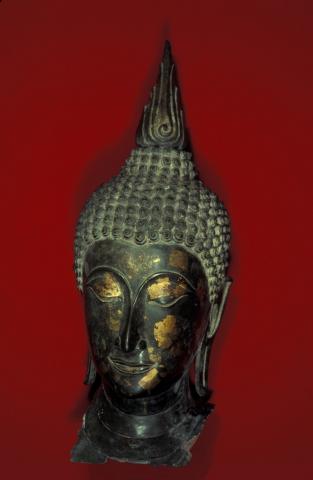Metals
S. R. Garcia, D. Gilroy and I. D. MacLeod
Introduction
The significance of metals to human society is so great that two of the major eras of prehistory are described in terms of the Bronze Age and the subsequent Iron Age. The earliest metallic artefacts were beaten from naturally occurring copper metal and date back more than 6000 years.
The development of western and eastern societies has been closely linked with the working of metals. These materials have been used, either in pure form or when combined with other metals, to produce an enormous variety of objects including weapons, tools and decorative art objects. Consequently, metal objects make up a large part of many collections kept in museums, historical societies and private households.
Alloys
Properties of metals, such as appearance, strength, malleability and chemical reactivity can be altered by alloying with other metals or by the presence of other impurities. Iron for example, can be alloyed with carbon to form cast iron or with chromium and nickel to form stainless steel. Copper is often combined with zinc to form brass and with tin to form bronze.
Distinctive colours were often prized and as a result the compositions of metals were manipulated to obtain the desired effect. Chinese bronzes and Japanese sword guards are examples of objects where colour is an integral part of the object.
Patina
The patina is a film of metal corrosion products which forms on the surface of an object, either as a result of exposure to the elements or because of deliberate artistic intervention (Figure 1).
Before any decision is made to remove the patina from an object the nature of the object and its history must be considered very carefully. For instance, under no circumstances should the patina be removed from an ancient bronze sculpture. On the other hand, as Victorian era silver candelabra were usually kept in a highly polished state, accumulated tarnish should be removed.
Do not confuse the patina with a lumpy, pustular or uneven corrosion mound that may lie above the original surface of an object. If in any doubt, avoid any treatments that will remove these minerals until professional advice has been obtained.
Figure 1: Bronze Buddha head showing patina and gold-leaf additions.
Corrosion
The tarnishing or corrosion of metals is the major issue of concern confronting those responsible for the care of metal items.
Gold, silver, platinum, mercury and copper are the only metals stable enough to be found in their natural metallic state, with only small amounts of the latter four elements being found. All other metals are more stable when combined with other elements to form oxides, sulphides, chlorides, carbonates and other compounds. There is therefore, a natural tendency for most refined metals to return to their more stable ‘corroded’ states. As a consequence, metal objects need to be protected from environmental conditions and pollutants which encourage corrosion.
In some cases as the metal corrodes the oxide film that forms acts as an ‘insulating’ barrier, slowing the rate of corrosion to an acceptable level. Copper and aluminium are two such metals in which oxide coatings form protective, passivating layers. When iron corrodes however, it does not form a protective film. The corrosion of iron will continue until no metal is left unless action is taken to protect it from the elements.













